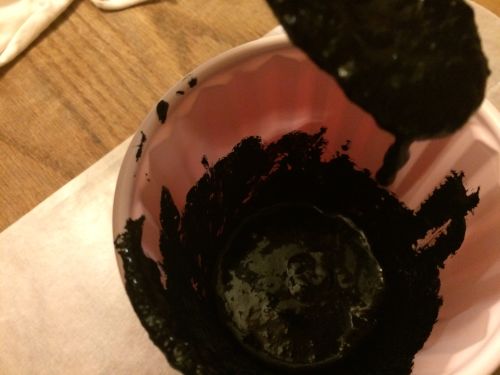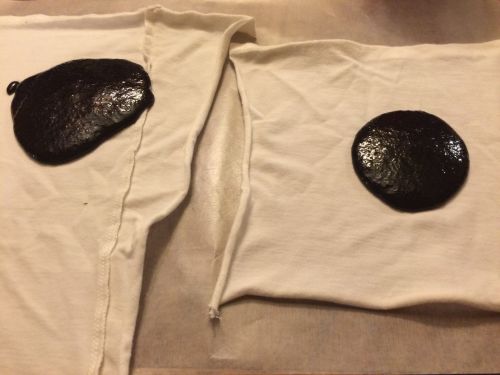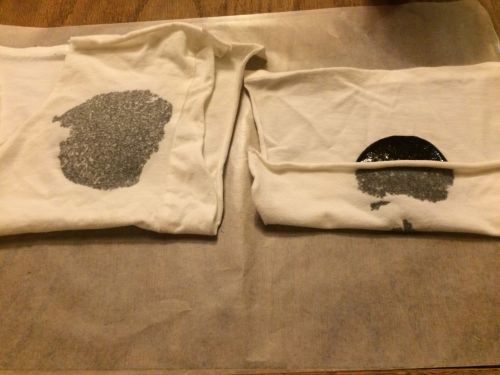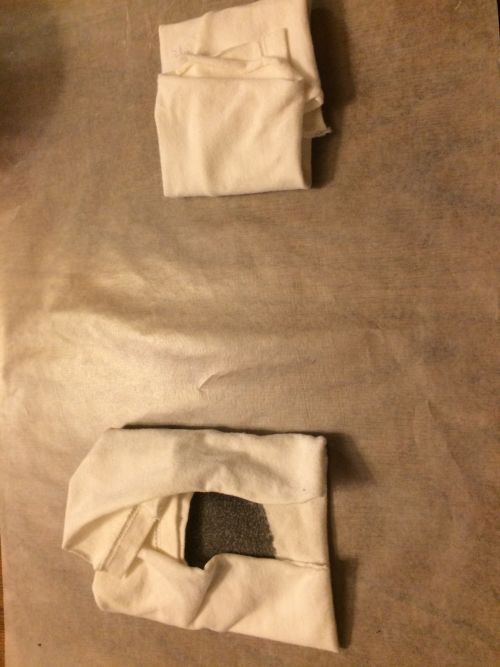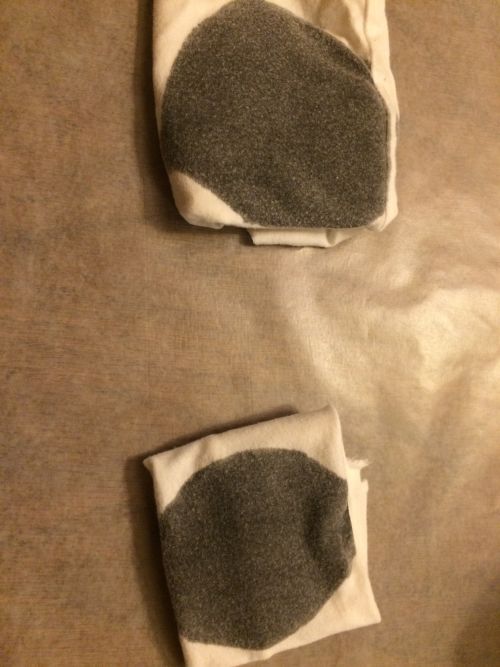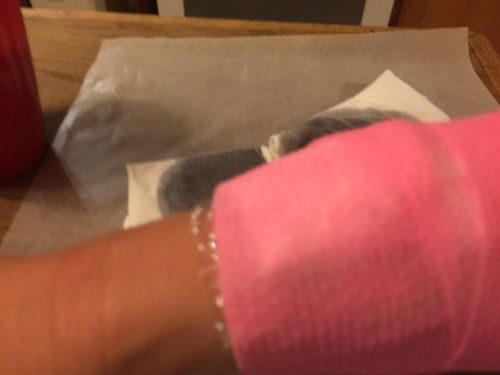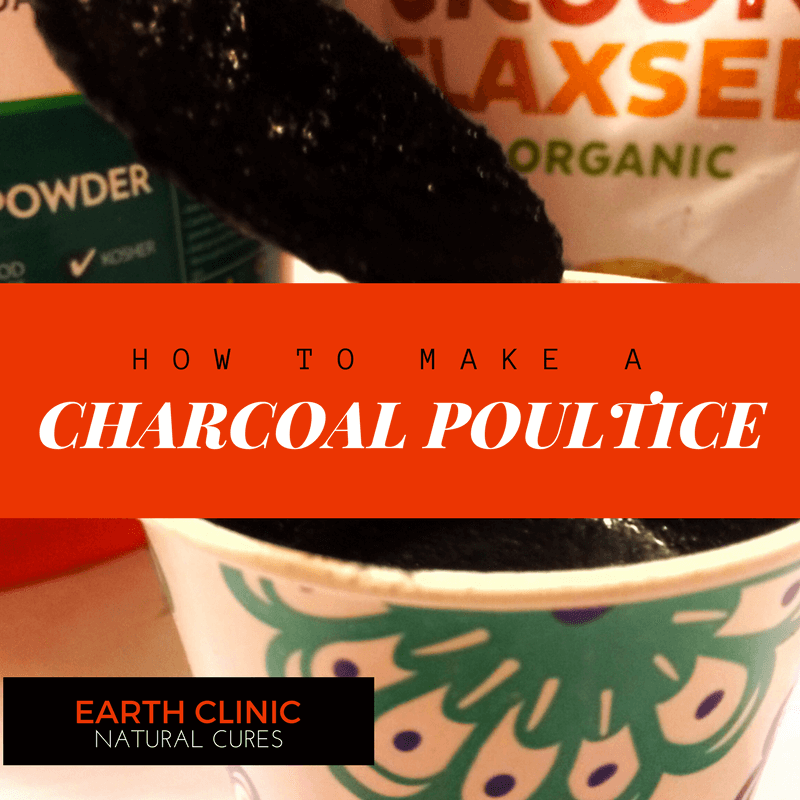
It is very easy to make a charcoal poultice if you have a few simple items on hand. Activated charcoal poultices are used for skin infections, insect bites, boils and much more. There are many medicinal applications for these poultices and you will wonder how you ever lived without them!
How Does an Activated Charcoal Poultice Work?
The porous properties of activated charcoal attracts toxins and bonds to them, drawing the infection or toxic element from the body.
What You Will Need:
- 3 T. Activated Charcoal Powder
- 3 T. flaxseed (or cornstarch) optional, but very helpful
- 2/3 cup water
- Spoon (disposable is easier, but not required.)
- Cup (disposable is easier, but not required.)
- Pieces of clean white t-shirt or cotton bed sheet or heavy duty white paper towels
- Plastic wrap (The kind used in the kitchen for food storage.)
What To Do:
Mix the charcoal powder and the flaxseed (or cornstarch.) in the cup. If you do not have flax seed or cornstarch on hand, just double the amount of charcoal powder.
Add the water carefully because charcoal “poofs" easily and can be messy.
Lay out several paper towels or pieces of sheet or t-shirt on a counter. (Note: If you are concerned about charcoal staining your countertops you can make the poultices on top of sheets of waxed or parchment paper.)
The sizes of towel or cloth that you use depends upon what you are treating. For small bites or infections you wish to cover, you won't need very large pieces like you will to cover the liver area abdomen. Keep in mind that you will need to leave a margin at the end of your poultice.
Stir the mixture again. After a few minutes it should seem jelly like (unless you are not using the flax seed.) You can add more water or charcoal if needed to get a jelly like consistency. Spread the charcoal onto the towels, about as thick as you would peanut butter on a sandwich. Leave several inches around the edges of the towels with no charcoal (3/4 inch or so for small towels.) Now place a second towel the same size over each. Now you have a charcoal sandwiched between two paper towels or pieces of cloth, also known as a poultice. If you get the charcoal too close to the edge, it can seep out and make a mess.
You lay this poultice right on the skin. There is a layer of towel between the skin and the charcoal, so unless it leaks, it doesn't get too messy. Place a piece of plastic wrap over the poultice. This keeps the charcoal moist. It is active when it is wet, so you want it to stay moist. Use an ace bandage or cohesive bandage to attach it to the body.
You can also use a generous amount of plastic wrap to attach the poultice to an area and then used lots of masking tape to secure it. Sometimes you just have to improvise with what you have on hand!
You can use a poultice overnight on a sting, over the kidneys, ovary, gall bladder, liver, etc. It will draw out poisons, reduce inflammation and swelling, and decrease pain. With a very serious acute problem (like a snake bite) you must change the poultice very often at first; every 15 minutes or so. But usually, every couple of hours is fine and overnight is fine.
The amounts given above will make 4 or so large poultices. You can make more or less as you need. Store extra poultices in a zip lock bag in the refrigerator for a week or two.
To make a poultice to use in your mouth for a canker sore or tooth infection instead of using paper towels or cloth, use an empty tea bag.
Watch how the lovely Mama to Many prepares a charcoal poultice in this Earth Clinic video.
Tea Bag Poultice
Use any tea bag that is handy and cut off the top. Put about a teaspoon of activated charcoal powder into the bag. Moisten the bag with water. Apply to mouth sore or tooth infection.
This poultice can be used anywhere on the body that needs only a small poultice. The weave of a tea bag usually allows more charcoal to escape than the above mentioned poultice. This does not affect performance but has the potential to be messier.
Tips for Poultice Use:
It is better to use a larger poultice than a smaller poultice. If you have a bee sting that is the size of a quarter, use a poultice that goes beyond the site of swelling at least an inch in each direction. You will have more drawing power this way.
Sometimes the skin needs some air. Allow the skin an hour or two between poultices to dry and get some oxygen.
Have you used a charcoal poultice? Please share your story with us!
